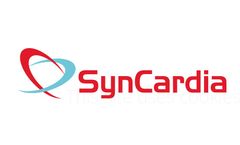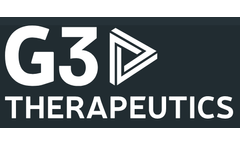Refine by
Ecg Articles & Analysis: Older
20 articles found
For healthcare providers looking to enhance patient care while managing expenses, renting mobile ECG (electrocardiogram) devices offers a compelling solution. This approach not only improves patient access to vital heart monitoring but also provides significant benefits for healthcare practices. Here’s why renting mobile ECG devices to patients is a ...
ByPanonIT
The electrocardiogram (ECG) is an essential medical test that provides vital information about the electrical signals emitted by the heart. ...
ByPanonIT
The importance of regular electrocardiogram (ECG) monitoring, particularly using mobile ECG devices, cannot be emphasized enough. Here’s why integrating mobile ECG technology into your sports routine is essential for athletes of all levels. ...
ByPanonIT
However, technological advancements, especially in mobile health devices, are beginning to bridge these gaps. Mobile ECG (electrocardiogram) devices are at the forefront of this transformation, revolutionizing cardiac care in remote locations. Here’s how mobile ECG technology is making a significant impact on healthcare practices in rural areas and ...
ByPanonIT
In the evolving landscape of healthcare technology, mobile ECG devices have emerged as a transformative tool for monitoring heart health. While traditional ECG machines have been pivotal in diagnosing and managing cardiovascular conditions, mobile ECG devices offer distinct advantages that make them a compelling choice for modern healthcare. ...
ByPanonIT
CPR training is more than just a certification; it’s a crucial skill that can save lives in critical situations. In Kentucky, where industries range from manufacturing to healthcare, the demand for comprehensive CPR and first aid training is ever-present. The different levels of CPR training are designed to meet specific needs – from basic techniques for laypersons to advanced ...
The experimental setup of the cardiopulmonary portion involved the implantation of emka easyTEL-S-ETA telemetry sensors for electrocardiography (ECG) recordings, enabling the monitoring of heart rate in freely moving mice expressing ChR2 (a light-sensitive protein) in the PPN or vlPAG (ventrolateral periaqueductal gray). emka & SCIREQ whole-body plethysmography (WBP), ...
Atrial Fibrillation (AF) is often described as an irregularly irregular rhythm. AF is an arrhythmia with no consistent ventricular response or pattern due to its somewhat random and chaotic discharging of atrial impulses firing disconnectedly from multiple foci. This continuous and erratic behavior results in a ventricular response that changes from beat to beat. AF will typically present with a ...
AV Nodal Reentrant Tachycardia (AVNRT) is an arrhythmia caused by dual AV nodal pathways (one slow and one fast conduction route that enters the AV node). The fast tract has rapid conduction speeds with a longer refractory period, while the slow tract has slower conduction speeds with a shorter refractory period. During sinus rhythm, both pathways are activated, but the fast pathway makes it ...
Typical AFL can be described as having a “sawtooth” appearance from an aVF ECG vector used with the Carnation monitor. AFL can manifest with either a regular or irregular ventricular response depending upon AV node conduction. ...
BACKGROUND: Recent studies have shown that patient-triggered cardiac event recorders (CER) have an increased diagnostic yield and are more cost effective than conventional 24-h-Holter electrocardiograms (ECGs) for the evaluation of sporadic, potentially arrhythmia-related symptoms. ...
ByNovacor
Low Heart Rate Variability With today’s technology, tracking your HRV can be done through fitness trackers built with ECG or PPG sensors. Noticing a low HRV trend can be a strong indicator of future complications that might need to be medically addressed. ...
BySky Labs
These sensors are commonly referred to as ECG which is short for Electrocardiography. An electrocardiogram works by utilising electrodes that connect to a machine with wires and are placed in different areas of the body including the chest, legs, and arms. ...
BySky Labs
As a technology, photoplethysmography (PPG) has been explored for almost a century, but it is only in the last few years that it has had a broader application beyond specialised medical settings. That has generally been driven by the evolution of smartphones, smartwatches and even smaller wearable devices such as smart rings. PPG is most commonly used in pulse oximetry in clinical settings ...
BySky Labs
These are then transmitted to a cloud platform where AI technology can help detect and analyse AF. It also uses electrocardiogram (ECG) signals to provide additional information to the user’s doctor, often without user intervention. ...
BySky Labs
A number of cardiac tests may be used to make a diagnosis, including non-invasive methods such as X-ray, magnetic resonance imaging (MRI), echocardiograms (EKG), electrocardiogram (ECG) and genetic testing, or minimally invasive procedures, such as cardiac catheterization. ...
The abstract, “Accelerating Proper Evaluation of Emergency Department Patients for Arrhythmia Concerns with Discharge Use of ECG Patch Monitors,” authored by Marie Yabut, Sarahi Gomes-Duarte, MA., and Eric Shipley, MD, MBA., explores the role of the CAM ECG monitor as a solution for outpatient evaluation after presenting symptoms of cardiac ...
Cardiology follows the same narrative with ECG. They’re dependable, accurate, and standardized. The DeepMind data set only meets one of these three requirements; their data is in a standardized format. ...
Abstract Background/objectives: Various adipose tissue compartments play an important role in the development of cardiometabolic diseases. The quantity of different fat compartments is influenced by genetic and environmental factors. The aim of our study was to evaluate the magnitude of genetic and environmental effects on epicardial, subcutaneous and visceral adipose tissue (EAT, SAT and ...
Methods and Results - In 24 dogs, a thrombotic occlusion of the left anterior descending coronary artery was induced and documented by 12-lead ECG and coronary angiography. After $60 minutes of occlusion, tissue-type plasminogen activator (t-PA; 1.42 mg/kg) was given intravenously over 90 minutes. ...










